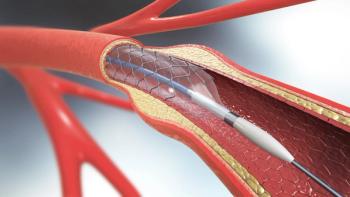
Restless Legs Syndrome: Learning to Live with It
Patients may have questions about their uncomfortable leg sensations.
Patients may have questions about their uncomfortable leg sensations.
What Is Restless Legs Syndrome? Restless legs syndrome (RLS) is a disorder of the nervous system. Patients with RLS have uncomfortable feelings in their legs. Patients say it feels like something is crawling under their skin. Other feelings might include pain, itching, and pins and needles.
These feelings only occur when patients are resting, mostly in the evenings and during sleep. These unpleasant feelings go away when people move their legs. Patients with RLS have a strong urge to keep moving their legs. Patients say they cannot resist the urge to keep moving their legs. When sleeping, leg twitching is common.
About 1 in 10 people have RLS. It affects people of all ages, but most patients tend to be middle aged. RLS usually worsens with age. More women than men have RLS. Many pregnant women experience RLS, but it usually goes away after the baby is born. Most people with RLS have serious sleep problems. RLS patients are then tired the next day and have problems paying attention to what they are doing. Many patients say they don’t have the energy to do the things they like to do.
What Causes RLS?
RLS can be caused by genes, which is why it tends to run in families. This is called primary RLS. Often RLS is related to another medical issue. This is called secondary RLS. Some conditions causing RLS include kidney disease, low iron levels, anemia, high blood pressure, heart disease, and diabetes.
Your doctor may order lab tests to determine if you have low iron or abnormal blood levels. Your doctor might want you to stay overnight in a sleep lab, too. This is to see if there are other things causing your sleeping problems. Several medications also cause secondary RLS. Medications taken for depression, colds, allergies, and nausea usually worsen symptoms. RLS is also linked to lack of exercise, caffeine, smoking, alcohol, and anxiety.
Can Medication Help?
There is no cure for RLS, but 3 medications exist to treat RLS. These medications help ease the unpleasant feelings. If RLS is causing severe pain, your doctor may prescribe pain relievers. Sleeping pills may reduce sleeping problems. Some medicines that are used to treat convulsions or Parkinson’s disease also reduce the unpleasant feelings. No single treatment works for everyone. Your doctor may have you take several medications to find which one works best for you.
What Else Can I Do?
There are several things you can do to reduce your symptoms. For many patients, certain things make RLS worse. These are called triggers. You should keep a diary and write down what you were doing before your symptoms got worse. If you find a particular activity worsens your symptoms, avoid this trigger if possible.
Regular or moderate exercise is recommended each day. Thirty to 60 minutes are recommended. Exercise must involve using your legs, such as walking or running. Because exercise can be boring, try combining your exercise with an activity that you like, such as exercising and watching TV. Avoid extreme exercise. This may worsen your symptoms. Also, don’t exercise before you go to bed.
You should change your diet by eliminating or reducing caffeine and alcohol. If you smoke, consider quitting or cutting back on the number of cigarettes you smoke. Limiting the amount of refined sugar taken during the day may ease your symptoms at night.
Improving your sleep habits is very important. People sleep better in a cool and dark room. Go to bed the same time each night and get up at the same time each morning.
Where Can I Get More Information?
The Restless Legs Syndrome Foundation (www.rls.org) provides lots of good information, including support groups. Support group members help each other understand RLS and discuss ways to cope.
Dr. Zanni is a psychologist and health systems consultant based in Alexandria, Virginia.
Newsletter
Stay informed on drug updates, treatment guidelines, and pharmacy practice trends—subscribe to Pharmacy Times for weekly clinical insights.






































































































































































































